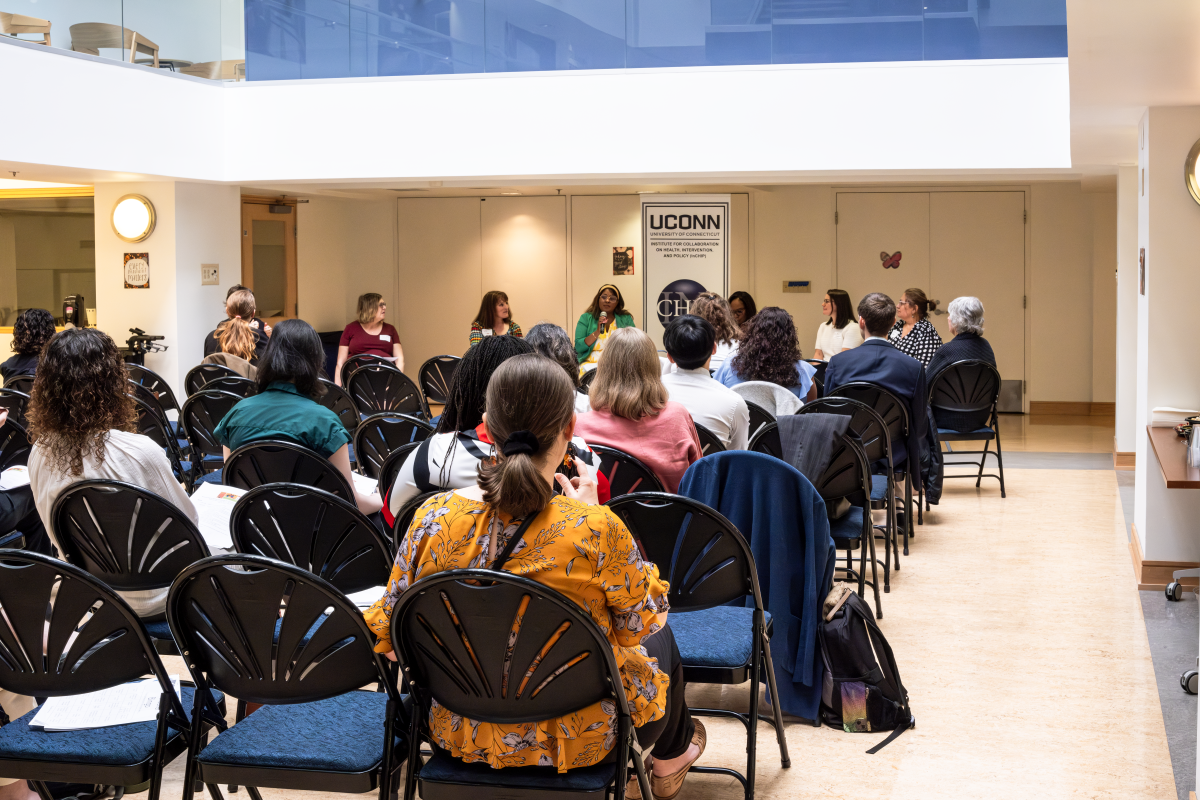In many American workplaces, employees are bombarded with almost incessant interruptions that disrupt concentration, derail productivity, and generate stress.
Many office workers and IT professionals report being interrupted every three to 11 minutes, while nurses, on average, are interrupted six to 12 times an hour. Most business emails are opened within six seconds of being received, and employees check their emails up to 36 times an hour, according to UConn management professor Nora Madjar.
“Competing demands and interruptions have become a way of life as employees juggle multiple responsibilities, work on multiple teams, and manage many projects,’’ says Madjar, whose research focuses on both the impact of interruptions and ways to minimize them.
“We know that multitasking is not efficient,’’ she says. “When an employee must repeatedly switch his or her focus of attention, this often reduces the time available for deep, quality work. When that worker loses his or her train of thought, it takes time to start over and re-focus on the original task.’’
Madjar co-authored research titled “Interruptions and Task Transitions: Understanding their Characteristics, Processes and Consequences’’ which appeared in Academy of Management Annals in August. She collaborated with professors Sophie Leroy of the University of Washington and Aaron Schmidt of the University of Minnesota.
Interruptions Multiplied During The Pandemic
The team’s research took on even greater significance when the COVID-19 pandemic necessitated a dramatic shift to remote work for many office workers. In response, the researchers are expanding their work to investigate how working from home has impacted employees, particularly those with young children, and how interruptions and the perceptions of the interrupted differ depending on their gender.
The demands on workers today are unprecedented, Madjar says. Almost overnight, many were expected to be engaged and productive at their jobs while simultaneously tending to their children’s needs.
“With the COVID-19 pandemic, and people working from home, they are contending with even more interruptions, both from their supervisors and from family members,’’ she says. “The pandemic has created an urgency around this type of research. Interruptions in the workplace are posing a serious threat to employees’ performance and reputation.
“The nature of those workplace interruptions is also very different than in the past,’’ she says. “Before, interruptions might have involved chatter from a colleague or a text from someone with an urgent request. Today it might be a child demanding attention, requesting lunch, or needing assistance with homework.’’
Madjar adds: “Another unique phenomenon is whether these personal interruptions are occurring privately or in public. A child who wants a kiss may be a delightful interruption in private, but if an employee is on a Zoom call with the CEO, it might elicit a negative emotion.’’
Why Do Workplace Interruptions Matter?
Interruptions in the workplace impact both the quality of work and the well-being of employees, Madjar says.
Studies focused on task performance, accuracy and errors, quality of information processing, and other assignments, have consistently documented the harmful effects of interruptions, including the cognitive disadvantages of switching focus of attention.
“Interruptions—whether a colleague’s loud conversation, a siren wailing down the street, or the ping of an email–often break one’s train of thought and prevent a sense of workplace flow,’’ Madjar says. “When an interrupted task is resumed, it can take time to remember where one left off and regain focus.’’
The implications are most startling in workplaces that require life-or-death decision-making. In a hospital, where an interruption could result in a nurse forgetting to administer medication, or at an airport, where a pilot misses an item on a pre-flight checklist, the consequences could be devastating, Madjar says.
Resuming a task after an interruption is generally not difficult for simple tasks, but for more complex ones, “resumption lags’’ are problematic, she says.
Additionally, studies have found that interruptions threaten work resources, creating both “time famine’’ and time pressure, work overload, and employee stress.
“To cope with the added workload and lost time, employees have been shown to respond to intrusions by spending less time on each of their work tasks and reducing the volume of their output. They may reduce the number of tasks they attend to, or extend their work hours,’’ she says. “Stress is exacerbated when intrusions are caused by tasks unrelated to the current one, tend to increase anxiety and, over time, lead to emotional exhaustion.’’
Not All Distractions Are the Same
Not all disruptions have similar consequences, the researchers concluded. They separated interruptions into different categories, from the most severe, such as intrusions and distractions, to the more minor, such as an unplanned break or daydreaming.
Even common distractions, such as background noise, have been proven to be detrimental and create stress, lower job satisfaction, decreased persistence, and fewer postural adjustments among workers. Noisy conversations or song lyrics can interfere with word tasks. This may explain why employees in “open offices’’ report high levels of distraction and a 64% increase in self-interruptions.
“Unfortunately, even attempts to ignore the disruption often prohibit full attention on the primary task,’’ Madjar says.
But not all interruptions are negative. A well-timed, intentional break allows an employee to refresh and recover, reduce fatigue, and restore creativity.
“Breaks are needed to prevent depletion of resources,’’ she says. “However, the timing and nature of the break are important.’’
Work breaks are most productive when used for napping, relaxing, walking, exercising, reading, and non-work socialization. Using break time to run errands, engage in a demanding task, or discuss work projects over lunch generally doesn’t provide the recovery time that enhances work.
What Can Employees Do to Counteract Distractions?
The research is important because interruptions may negatively affect well-being and at the same time they are necessary to generate fresh excitement, new energy, and motivation in the workplace, Madjar said. A break after accomplishing a difficult goal over a short time, or having done a boring task over a longer time, triggers enthusiasm for new tasks to come.
There are three things that Madjar says can help employees minimize the negative impact of interruptions:
- When the phone rings or someone knocks on the door, take a minute to plan how you’re going to return to the task at hand before responding to the interruption. That enhances performance and speeds re-engagement.
- Establish quiet, interruption-free time for work. This is something that usually requires a company-wide initiative. A company could establish a policy that emails will be responded to at noon and 5 p.m. If a corporate culture demands quick responses to email, the employee won’t feel free to disconnect, even briefly.
- Lastly, try to receive an alert before an interruption occurs. Set a reminder 10 minutes before a meeting, so that you can synthesize information or next steps upon return. Advance planning and support from the organization seems to be essential to successfully managing workplace interruption.



